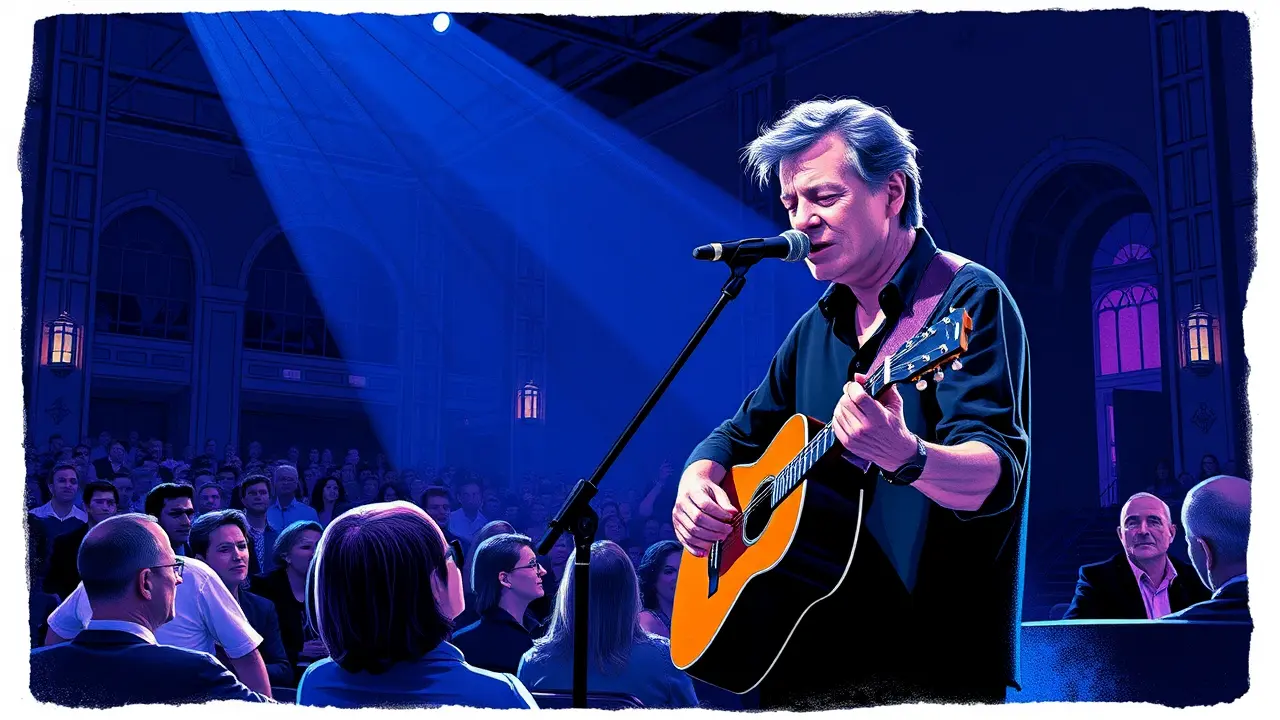Bruce Springsteen Performs at Academy Museum Gala
The hallowed halls of the Academy Museum, typically echoing with the ghostly whispers of cinema’s past, were electrified last night by a different kind of iconography, one born not of celluloid but of the asphalt and boardwalks of New Jersey. Bruce Springsteen, the undisputed heavyweight champion of American rock and roll, traded the roaring thunder of the E Street Band for the stark, confessional intimacy of an acoustic guitar, delivering a three-song set that felt less like a performance and more like a sacred offering.As a Legacy Award honoree, The Boss was being celebrated for a filmic body of work that parallels his musical canon in its gritty, character-driven narratives, but the man himself came to do what he has always done: testify. The set was a masterclass in curatorial storytelling, a carefully sequenced emotional arc that spanned the breadth of his mythos.He opened with the haunting strains of 'Atlantic City,' its opening mandolin line, now plucked on a six-string, cutting through the black-tie audience with the grim fatalism of a modern folk ballad. In this stripped-down setting, the song’s desperate hope—'everything dies, baby, that's a fact, but maybe everything that dies someday comes back'—landed not as a rock anthem but as a whispered prayer, a stark reminder of the economic desolation and fragile dreams that have always been the bedrock of his songwriting.It was the perfect bridge from the silver screen’s dramatized struggles to the real-world poetry Springsteen has chronicled for five decades. From there, he pivoted, not to a deeper cut, but to the sweeping, gospel-infused promise of 'Land of Hope and Dreams.' This was the set’s emotional crescendo, the answer to 'Atlantic City’s' question. Where the first song detailed the wreckage, this one offered the redemption, the train metaphor chugging along on the rhythm of his guitar, gathering souls and stories, promising a destination where 'dreams will not be thwarted' and 'faith will be rewarded.' In the context of a museum gala, a song about a train carrying saints and sinners felt profoundly apt; it was a musical embodiment of cinema’s own power to transport us, to collect our collective experiences and ferry them toward a shared catharsis. The performance was a potent reminder that Springsteen’s legacy is not merely in his Grammy-laden catalogue or his record-breaking stadium tours, but in this very ability to hold two opposing truths in his hands at once—the crushing weight of the American reality and its boundless, almost religious promise.One cannot discuss the Boss without acknowledging his unique position as a cultural archivist; his songs are the unofficial documentary of the American 20th and 21st centuries, and to hear them in a temple to another form of documentation created a resonant, powerful feedback loop. The choice of an acoustic set was deliberate, peeling back the layers of production to reveal the raw, narrative bones of his work, much like a director’s cut strips a film to its essential story.The audience, a mix of Hollywood royalty and industry titans, was utterly still, a rarity in a town known for its relentless networking; for those few minutes, there were no deals being made, only a collective bearing of witness. It underscored a truth often forgotten in the glare of premieres and awards season: that the most compelling stories are not always found on a screen.Sometimes, they are strummed into existence by a lone man with a guitar, his voice a gravelly roadmap of every mile he’s traveled and every character he’s championed. Last night at the Academy Museum, Bruce Springsteen didn’t just accept an award; he provided the soundtrack, proving once again that his music is the permanent, beating heart of the American narrative, a legacy as enduring and essential as any preserved in cinematic history.
It’s quiet here...Start the conversation by leaving the first comment.
© 2025 Outpoll Service LTD. All rights reserved.
